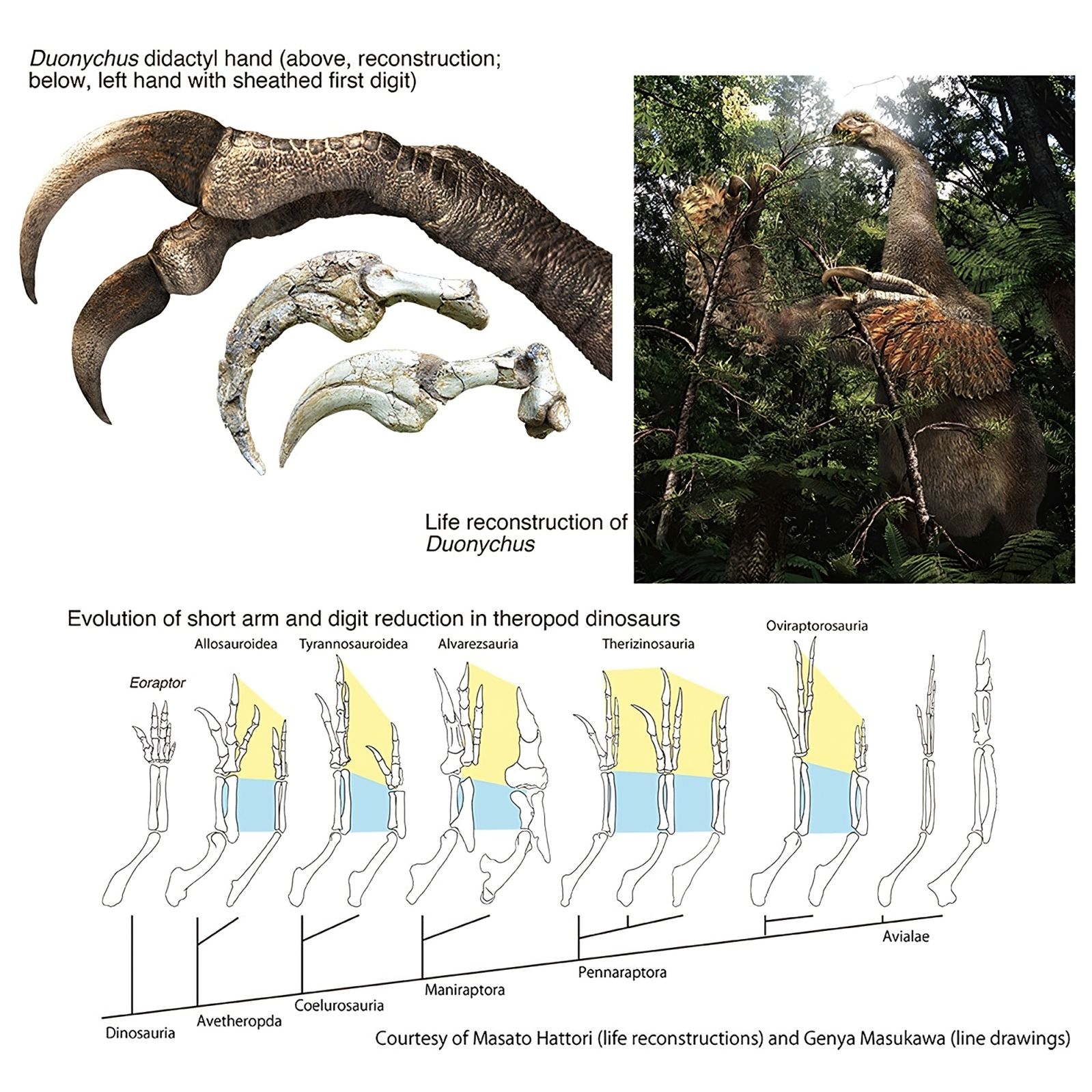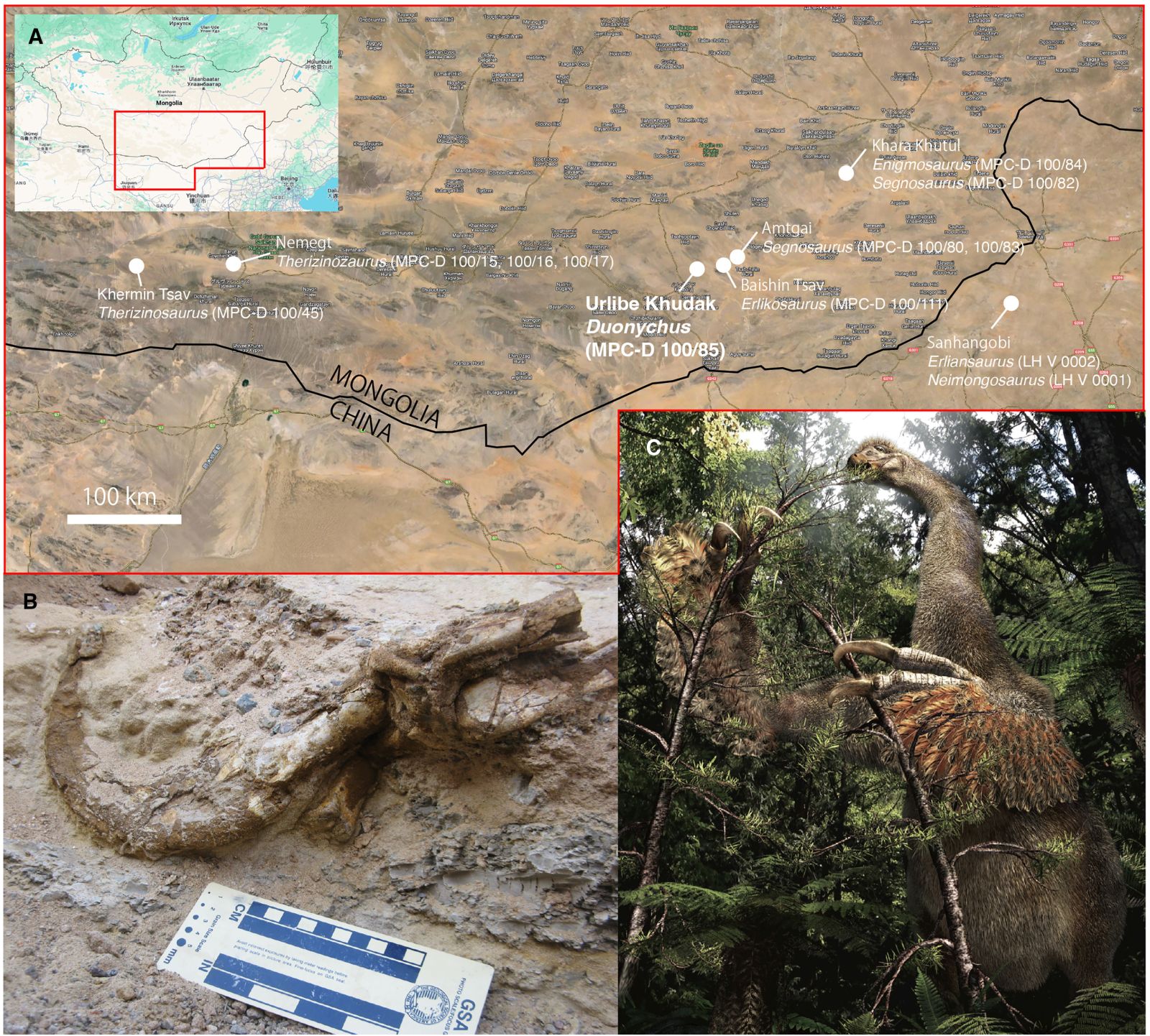Follow us on Google News (click on ☆)
Discovered in 2012 but left unexploited for years, this specimen named Duonychus tsogtbaatari intrigues with its hands reduced to two fingers. Published in iScience, this research sheds light on the poorly understood evolution of these herbivores resembling prehistoric sloths.

A three-dimensional discovery
The fossils, unearthed in 2012 in the Bayanshiree Formation, include rare elements: complete arms with claws, sections of the pelvis, and several cervical and dorsal vertebrae. Their three-dimensional preservation, exceptional for remains dating back to the Upper Cretaceous (90 million years ago), allows the study of anatomical structures usually crushed in sediments.
Notably, the 12-inch-long (30 cm) claws retain traces of their keratin sheath, a material typically degraded during fossilization. This preservation gives researchers an accurate view of the claws' actual morphology, far more imposing than the underlying bone alone would suggest. Microscopic analysis even reveals characteristic wear patterns.
The specimen, a subadult individual according to bone growth indicators, would have measured 10 feet (3 meters) in length with an estimated weight of 600 pounds (270 kg). The quality of the fossils enabled scientists to reconstruct the forelimb articulation with unprecedented precision, revealing unexpected mobility and strength for this herbivorous species.
A surprising adaptation
The reduction to two fingers radically distinguishes Duonychus from other therizinosaurs, which were already atypical with their three claws. This uniqueness suggests advanced dietary specialization, possibly for grasping tough vegetation in a semi-arid environment. Biomechanical analyses indicate that this configuration doubled gripping strength compared to three-fingered species.

Curiously, this adaptation resembles that of tyrannosaurs, although these lineages diverged over 100 million years ago. Researchers see this as a case of convergent evolution: similar ecological pressures leading to comparable anatomical solutions. The rigid wrist joints, also observed, confirm an adaptation for powerful pulling movements.
The Bayanshiree site, where the fossil was discovered, was home to a diverse fauna: beaked dinosaurs, predators like Alectrosaurus, and other therizinosaurs. This coexistence raises questions about Duonychus's precise ecological niche. Its potentially versatile claws could have served for feeding, defense, or displays.
Going further: Why did some dinosaurs lose fingers?
This phenomenon, called "digital reduction," appears in several theropod lineages. It usually results from evolutionary optimization for specialized functions, such as improved grip strength or more efficient locomotion. In therizinosaurs, this adaptation might be linked to their transition to a herbivorous diet.
Biomechanical studies show that reducing the number of fingers increases forelimb robustness. In Duonychus's case, two fingers allowed better force transmission when pulling branches. This configuration resembles that of modern sloths, though it represents an independent evolutionary convergence.
Interestingly, this trend is observable in several distinct groups: tyrannosaurs, alvarezsaurids, and now therizinosaurs. Each case represents a different adaptive response to specific environmental pressures. The discovery of Duonychus confirms that this evolution occurred multiple times in theropod dinosaurs.
This digital reduction might also be linked to genetic mutations affecting limb development during embryogenesis. Research on Hox genes, responsible for finger formation, could clarify these evolutionary mechanisms.